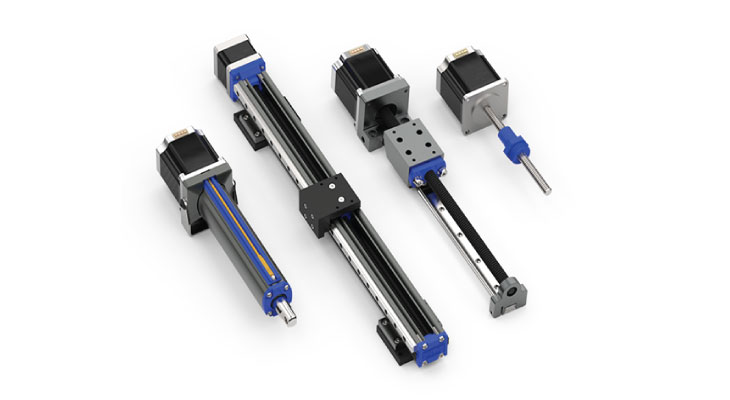Three Cool Projects for Small Linear Actuators

In short, a linear actuator is a device that creates linear (straight) motion. From highly complex applications to the most straightforward button pressing applications, small linear actuators are used everywhere!
After getting together with some fellow Helix design engineers, we have come up with (what we deem to be) 3 cool projects for this class of linear actuators.
1. Automated Stage Lighting Systems
Have you ever been to a concert, show, or play where stage lighting played a significant role in the theatrics and entertainment value of the performance? Utilizing stepper motor linear actuators within intelligent stage lighting can produce complex effects and can bring a show to life.
Actuators are used throughout various components of stage lighting systems. They can be found within the advanced lighting machinery and throughout the rails and structure of the automated lighting systems.
2. Automated HVAC Damper
Automated HVAC dampers are valves or plates used to control proper airflow throughout buildings. There are two kinds of HVAC dampers, automatic and manual. Automated dampers are powered by a small linear actuator with a lead screw that regulates airflow constantly controlled by a thermostat, solenoid, or building automation system.
The small footprint and torque make these actuators ideal for small automated HVAC dampers requiring safe and precise operation with little to no maintenance.
Installing the correct automated HVAC dampers will help increase energy efficiency, reduce emissions, extend facility life, improve overall indoor environmental quality and help conserve water flow.
3. Robots
Every engineer's idea of the "coolest" project for a miniature linear actuator - robots!
From kids to adults, people are fascinated by robots and how they do what they do. Asking questions like; how do all of these elements come together and move, lift, carry and take over the world as seen in almost every Sci-Fi movie?
The Answer: Linear actuators - power the mechanical linear motion needed for robot mobility.
At a more industrial level, robotic arms can streamline processes, increase productivity and automate repetitive tasks. As seen in the image to the right, linear actuators can be placed throughout robotic machines. Wherever you see motion in a robot, there is some mechanical actuator controlling that.
Linear actuators can also be found in household appliances such as robotic lawnmowers and robotic vacuums at a more commercial level.
Bigger isn't always better.
Smaller doesn't necessarily mean "less punch." When your significant factors are size, space, or precision, choosing a suitable linear actuator can make all the difference. To get ultimate precision performance for the intended application, you want to be very clear on the requirements necessary to perform the needed task.
Armed with the necessary information, you can achieve top performance and productivity by integrating a miniature linear actuator into your cool application/project.


